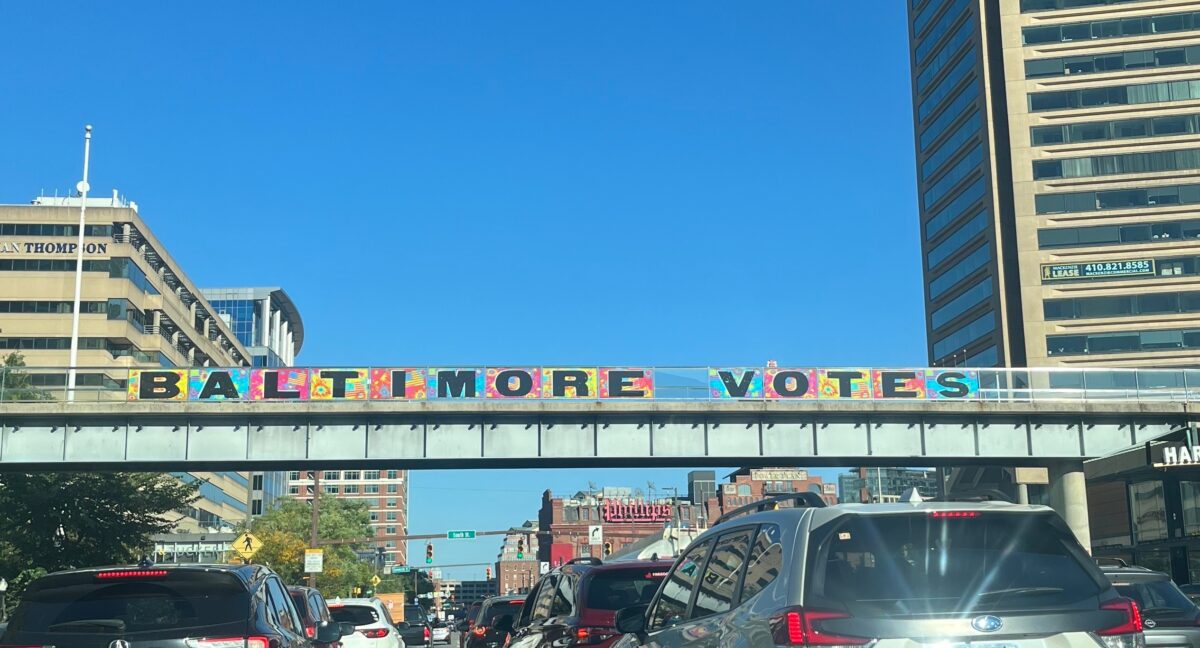
The presidential election vote may be a foregone conclusion in Maryland, but there’s still a lot at stake this November—from the future makeup of the Baltimore City Council and the redevelopment of the Inner Harbor to the replacement of Senator Ben Cardin, which could potentially tip the balance of power in the U.S. Senate.
In advance of Election Day on Tuesday, Nov. 5, we implore you to do as much homework as time permits. Below, browse our guide for helpful resources and information as you finalize your voting plan.
How to Register and Vote
Early Voting: In-person early voting will occur Oct. 24-31 from 7 a.m. to 8 p.m. daily, including the weekend. During this time, you can cast your ballot at any early voting center in the jurisdiction where you live. You can also register to vote during the early voting period by going to an early voting center in your county and bringing proof of residency—which could be an MVA-issued license, ID card, or change of address card, or a paycheck, bank statement, utility bill, or other government document with your name and address.
Mail-in Voting: If you want to receive your ballot by mail or fax, your printed application form must be received (not just mailed) by Oct. 29. If you want to request a mail-in ballot using the state’s online form, your request must be received by 11:59 p.m. on Nov. 1. More information on mail-in voting can be found, here.
Election Day Voting: In Maryland, eligible citizens can also register to vote on Election Day. Simply go to your assigned polling place and bring a document that proves where you live.
Key Races
- Maryland’s open U.S. Senate seat will help decide which party holds the majority of the Upper Chamber in Congress. Voters will also select the state’s slate of U.S. representatives, which includes three open seats. In the U.S. Senate contest, Prince George’s County Executive Angela Alsobrooks, a Democrat, is in a race against former Governor Larry Hogan, a Republican.
- Also, the retirements of Rep. Dutch Ruppersberger and Rep. John Sarbanes—and the vacancy created by David Trone’s unsuccessful Democratic primary bid for the U.S. Senate—have left open several congressional seats. Locally, in District 2, Baltimore County Executive Johnny Olszewski, a Democrat, faces radio talk show host Kimberly Klacik, a Republican. In District 3, Democratic state senator Sarah Elfreth faces Republican lawyer Robert Steinberger.
- In Baltimore City, voters will cast General Election ballots for mayor, comptroller, City Council president, and all City Council members.
City Ballot Questions
Of the eight Baltimore City ballot referendums, two questions have been receiving the most scrutiny.
- Approval of Question F, which refers to the “Inner Harbor Park,” would rezone Harborplace and enable the construction of private dwellings, i.e. condominium towers, to replace the original twin pavilions. A vote against Question F would prevent the zoning change and proposed construction of high-rise, private-residence buildings at Harborplace.
- Question H, if approved, would amend the City Charter to reduce the number of Baltimore City Council districts, and thus elected representatives, from 14 to 8. A vote against Question H would maintain the current size of the City Council.
Sample Ballots
You can check your registration status and find a sample ballot with all the races, candidates, and full wording of local and state referendums, here.
